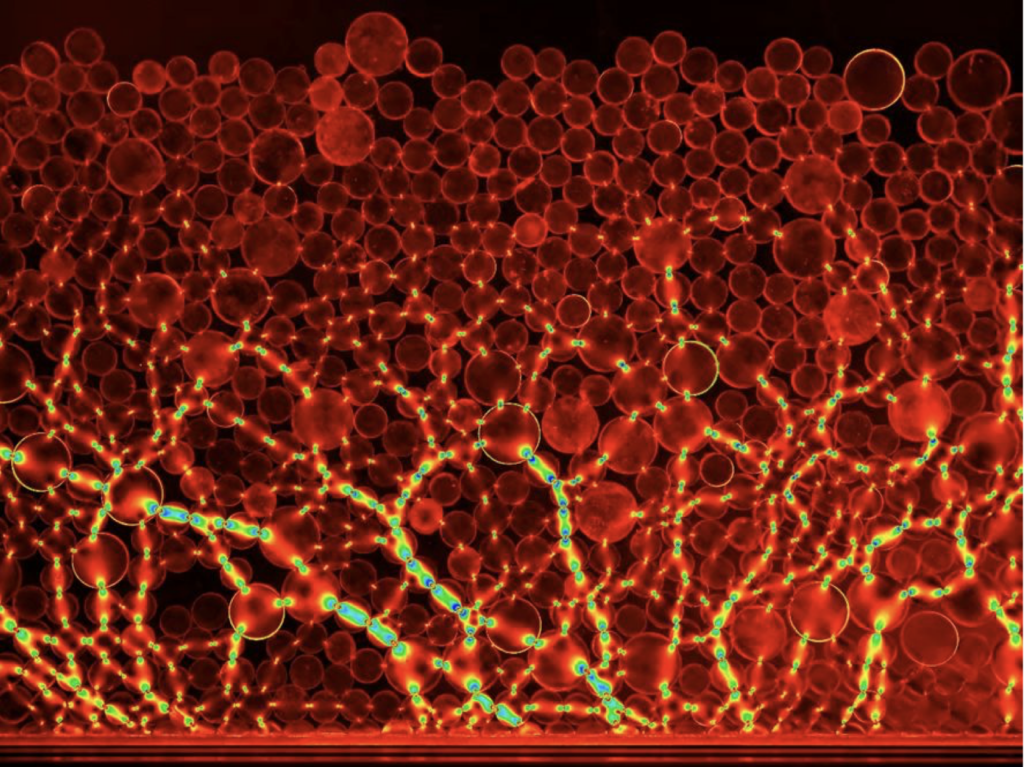
This picture illustrates “high-quality dynamic measurements of both velocity and stress fields“[1] in granular flows using photoelasticity. This study aims to understand the rheology of granular flow in order to “mitigate natural hazards of geophysical mass flows and reduce economic losses in industrial processes”[1]. Nathalie Vriend and her team are the first to “probe the stress state in fast, dynamic processes.”[1] [1] Nathalie Vriend, Paul M. Rady Department of Mechanical Engineering Research Overview https://www.colorado.edu/mechanical/sites/default/files/attached-files/v7_research_overview_slides_2-21-22.pdf

5 Comments. Leave new
Hey Jess!
Great selection! This image almost looks like one of those conceptualized images of the universe! I love the sharp colors shown in this against the dark background. Good work!
Third Prize:
I really appreciate the detail in this photo regarding the boundary layers and the fluidity of their positions; I’d be interested in how much post processing went into this photo.
Third Prize
I’ve had little exposure to granular flows, and your captivating images and informed scientific explanation helped me understand the background behind them.
Third Prize: Granular flows are very interesting and generally overlooked in fluid mechanics classes. The color palette in this picture is great, the dark background really helps the red grains pop visually. The yellow veins of stress are both interesting from a mechanical perspective and a great addition visually. The red grains and the yellow vein network are reminiscent of blood cells and biological processes.
Second Prize: We often overlook our experiments’ aesthetics in a rush to get to our results. This picture tells us to slow down and marvel.